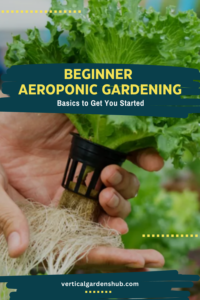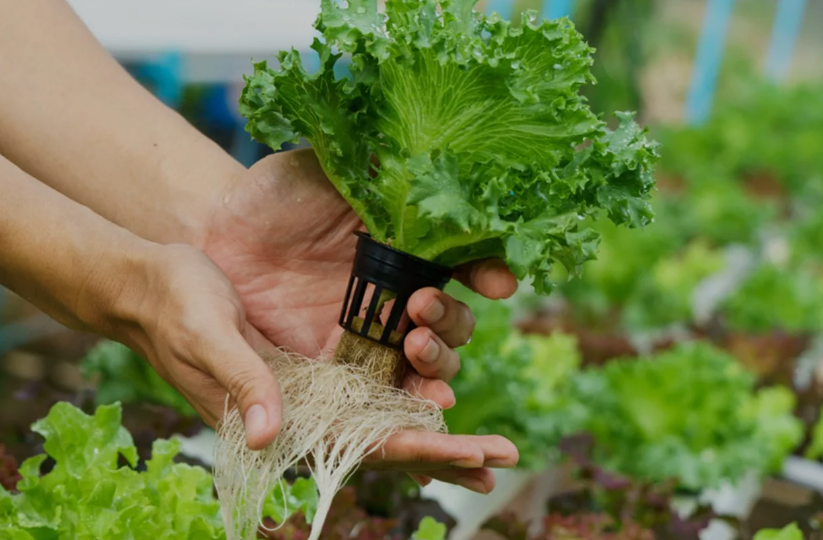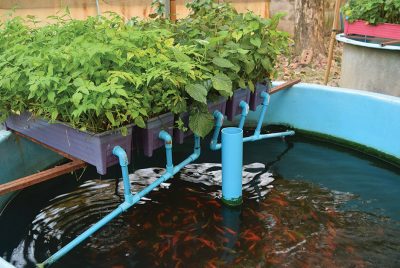Aeroponic Gardening: Understanding the Basics
If you’re looking for an innovative and efficient way to grow plants, then aeroponic gardening might just be your ticket. We’re diving into the world of aeroponics, exploring its benefits, and giving you a step-by-step guide to get started.
In this Article:
- Understanding Aeroponic Gardening
- Advantages of Aeroponic Gardening
- Getting Started with Aeroponic Gardening
- Setting Up Your Aeroponic System
- Nutrient Solution and Feeding
- Maintaining Your Aeroponic Garden
- Common Mistakes to Avoid
- Troubleshooting
- Scaling Up Your Aeroponic Garden
- Environmental Factors
- Harvesting and Enjoying Your Produce
- Sustainability Benefits of Aeroponics
Understanding Aeroponic Gardening
Aeroponic gardening is a modern cultivation method that takes soil out of the equation and introduces plants to a nutrient-rich mist environment. Unlike traditional methods that involve soil or hydroponics that use water as the medium, aeroponics uses a fine mist to deliver nutrients directly to the plant roots. This direct contact helps plants absorb nutrients more efficiently, leading to accelerated growth rates and higher yields.
Also read:
- Hydroponics vs Aeroponic Gardens: How they differ
- Vertical Hydroponic Gardening: How, Why and Types
- Building an Aquaponic Gardening System: Step by Step Guide
- Aquaponic Gardening: A Symbiotic Relationship
Advantages of Aeroponic Gardening
Aeroponics has several perks you’ll enjoy. First, it’s a water-wise choice, using up to 90% less water compared to traditional gardening. Second, nutrient usage is optimized, so there’s no overfeeding or nutrient wastage. With nutrients on tap and no need for the plant to search through soil, growth speeds up, and you’ll be enjoying your homegrown goodies up to 50% faster. Lastly, say goodbye to soil-borne pests and diseases that often plague traditional gardens.
Getting Started with Aeroponic Gardening
To get started, you’ll need an aeroponic system, a reservoir to hold the nutrient solution, a pump to circulate the solution, and misting nozzles to create that magical mist cloud. When it comes to plant selection, choose herbs, leafy greens, and small vegetables as they’re ideally suited for this system.
Setting Up Your Aeroponic System
Now comes the exciting part – setting up your aeroponic gardening system. It’s like creating your own little nutrient spa for your plants. Follow these steps to ensure a successful installation:
- Assemble the Components: Gather all the parts of your system and carefully follow the manufacturer’s instructions for putting it all together.
- Positioning Matters: Find a good sturdy location for your system where it won’t be easily knocked over.
- Planting Time: Place your chosen plants into the designated spots in the system. Ensure the roots are exposed to the misting area. Don’t forget to clean your plants of soil.
- Nutrient Solution: Fill the reservoir with a balanced nutrient solution according to the systems’ manufacturer’s recommendations.
- Turn on the Pump: Power up the pump, and watch as the nozzles create a nourishing misting cloud around your plants.
Nutrient Solution and Feeding
Just like we need a balanced diet, plants need a proper nutrient mix to thrive. Choose a nutrient solution specifically formulated for aeroponics. Follow the recommended ratios and feeding schedule to keep your plants happy and growing vigorously.
Maintaining Your Aeroponic Garden
Regular maintenance is the key to a flourishing aeroponic garden. Here’s a checklist to help you stay on track:
- Cleanliness is Crucial: Regularly clean your system – about every 2-3 weeks. Clean misting nozzles, and reservoir to prevent clogs, and maintain optimal misting.
- pH Patrol: Check and adjust the pH levels of your nutrient solution regularly to ensure optimal nutrient uptake.
- Monitor Plant Health: Keep an eye out for any signs of stress or nutrient deficiencies in your plants. Catching issues early helps prevent problems down the line.
Common Mistakes to Avoid
All gardeners can make mistakes when trying something new. Here are some pitfalls to steer clear of:
- Over Misting: Too much misting can suffocate the roots and inhibit oxygen uptake. Experiment and find the right balance for your plants.
- Neglecting Nutrients: Don’t slack on your nutrient solution. Your plants need their daily dose to grow strong and healthy.
Troubleshooting
Encountering some hiccups? No worries, there are solutions:
- Nutrient Deficiencies: Adjust your nutrient solution or feeding schedule to provide the missing elements.
- pH Imbalance: Use pH adjusters to bring your solution back into the optimal range for nutrient absorption.
- Wilting Plants: If your plants are drooping, it could be a sign of under-misting. Ensure the roots are consistently moist.
Scaling Up Your Aeroponic Garden
As your confidence and experience grow, so can your garden. Just remember, scaling up means more plants and more maintenance. Take it step by step and expand to your comfort zone.
Environmental Factors
Light, temperature, and humidity play important roles in aeroponic gardening. Aim for around 18 hours of light per day for optimal growth. Maintain a temperature between 65-75°F (18-24°C) and a humidity level of 50-70%.
Harvesting and Enjoying Your Produce
As mentioned earlier, your crop can grow 50% faster! Harvest them when they reach their peak size and flavor. Don’t be shy, snip off those fresh herbs and crisp greens and enjoy them in your favorite dishes.
Sustainability Benefits of Aeroponic Gardening
Aeroponic gardening isn’t just good for you; it’s great for the planet too. With reduced water usage and no soil depletion, you’re contributing to sustainable agriculture practices.
Final Thoughts
Aeroponic gardening might sound like something out of a sci-fi movie, but it’s very much a reality. With its efficient use of water, faster growth rates, and bountiful yields, aeroponics offers a fresh take on gardening. You can learn and gain more confidence with advice from fellow gardeners in online communities like forums, or social media groups.

FAQs
Q: Is aeroponic gardening suitable for all types of plants?
Absolutely! While it’s ideal for herbs, leafy greens, and small vegetables, you can experiment with other plants too. Just ensure they’re compatible with mist-based nutrient delivery.
Q: Can I build my own aeroponic gardening system?
Certainly! Many DIY guides are available, but if you’re a beginner, it’s recommended to start with a pre-built system to get the hang of the basics.
Q: How often should I clean my aeroponic system?
Regular cleaning is crucial to prevent clogs and maintain misting efficiency. Aim for cleaning every 2-3 weeks, depending on the buildup of mineral deposits.
Q: Are there any disadvantages to aeroponic gardening?
While aeroponics offers numerous benefits, it does require careful monitoring of nutrient levels and system maintenance. Inadequate attention can lead to plant stress or failure.
Q: Can I use organic nutrients in my aeroponic system?
Absolutely! Many aeroponic gardeners prefer using organic nutrient solutions to promote healthier, more natural growth. Just ensure they’re compatible with misting systems.





